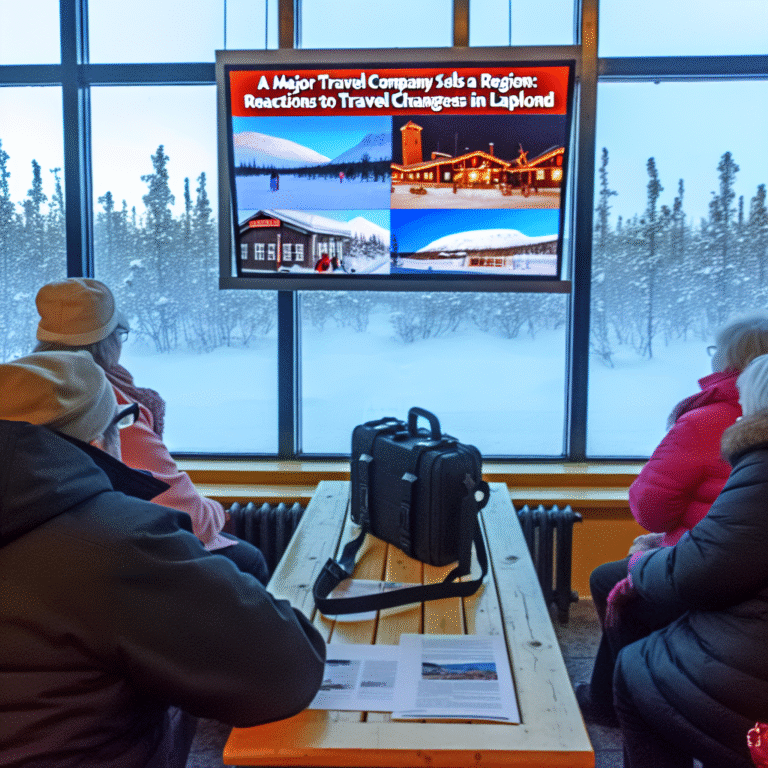Are Kuusamo and Kainuu Destinations Really Lapland? A Divided Opinion Among Tourists
The enchanting allure of Lapland has led many to believe that its charm can extend to the regions of Kuusamo and Kainuu, despite their geographical distance from traditional Lapland. Some argue that this perception is a marketing strategy, effectively leveraging the “Lappi” brand to attract tourists, while others firmly contend that geographical accuracy should prevail in promotional campaigns.
Recently, Iltalehti prompted its readers to weigh in on whether travel packages to these areas could legitimately be marketed as Lapland trips. The responses illuminated a clear divide among public opinion.
For many, the use of “Lapland” in marketing isn’t just clever advertising—it’s a strategy that resonates with tourists seeking the magic associated with this iconic region. One reader, under the pseudonym Jp.’s cousin, pointed out that marketing landscapes like Kittilä’s “Welcome to the North Pole” slogan perfectly aligns with the British and Irish perception of Santa Claus’s home. If the enchantment of the North Pole can be imagined in Kuusamo or Kainuu, then why not?
Another reader, Fresh, declared, “Kuusamo and Vuokatti are Lapland destinations for me,” highlighting the subjective nature of what defines a location’s identity.
Conversely, others advocate for a more precise delineation based on geography. Peehoo argued, “Kuusamo is situated further north than Simo in southern Lapland, and Kainuu boasts wilderness comparable to its northern neighbor.” These sentiments echoed through various comments, suggesting that a reindeer sighting—or two—could just as easily be had in either region. Aslak brought forth an interesting point of contention: “What does an Englishman understand about ‘Kainuu’? Lapland is a well-known brand, and a few hundred kilometers hardly matters in the grand scheme of marketing.”
Reflecting on the elasticity of geographical boundaries, Marme suggested that Finns often internalize regional labels loosely, noting that “Ruka, for instance, is frequently categorized as Lapland, even if that might seem a stretch.”
In a nod to a broader perspective, another reader, Southern Lapland, asserted, “Absolutely you can! Cities boast global recognition that transcends municipal borders.” Johanna reinforced this, asserting that to suggest otherwise is mere “petty-mindedness,” emphasizing the essential proximity of these areas on the map.
Yet, not everyone is convinced. The opposing camp fervently maintains that such marketing is misleading. “Lapland is in Lapland County, period,” stated Lappish, underscoring a sentiment echoed by many who prioritize geographic authenticity. Kazam issued a stark warning against misrepresentation: “What if you were sold a Mercedes but received an Opel? We’d demand accountability, and we can’t afford to let our reputation suffer.”
Critics like Guerrilla described the tactic as “false and misleading,” voicing concern over the potential ramifications for Finnish tourism. Several readers expressed that tourists arriving under the impression they are in Lapland—and then discovering otherwise—could face significant disappointment, leading to a fractured image of Finnish hospitality.
“Misleading marketing could tarnish our reputation,” cautioned Jussi, stressing the importance of accuracy for the sake of future tourism. The opinions aired by visitors on platforms like Visit Lapland only underscore this apprehension, with many openly disapproving of ambiguous promotional strategies.
As the debate unfolds, it becomes evident that while the magic of Lapland is undoubtedly enticing, the question lingers: How can we balance the allure of a well-known brand with the integrity of regional identity in tourism? The answer remains as complex and layered as the stunning landscapes of Finland itself.



